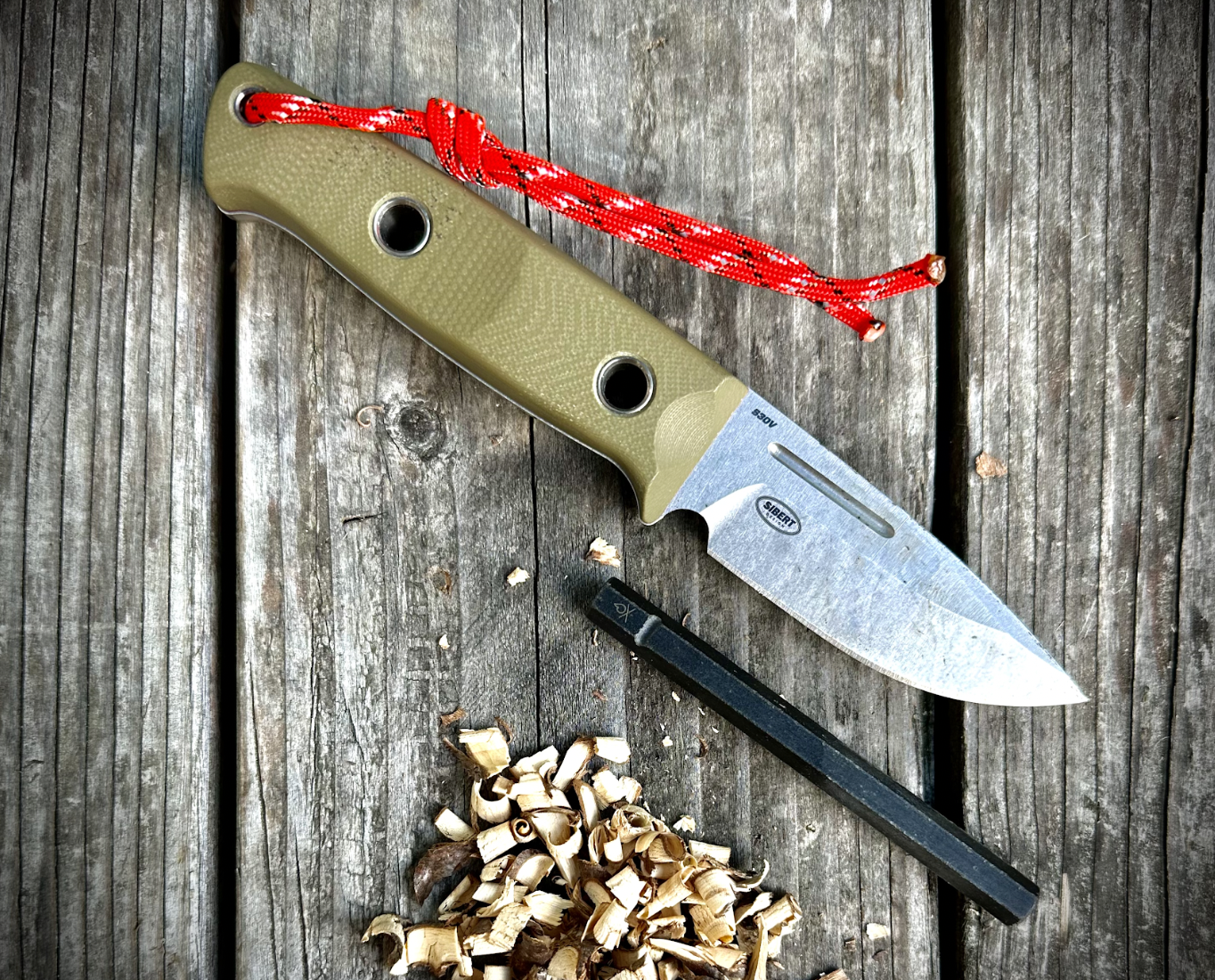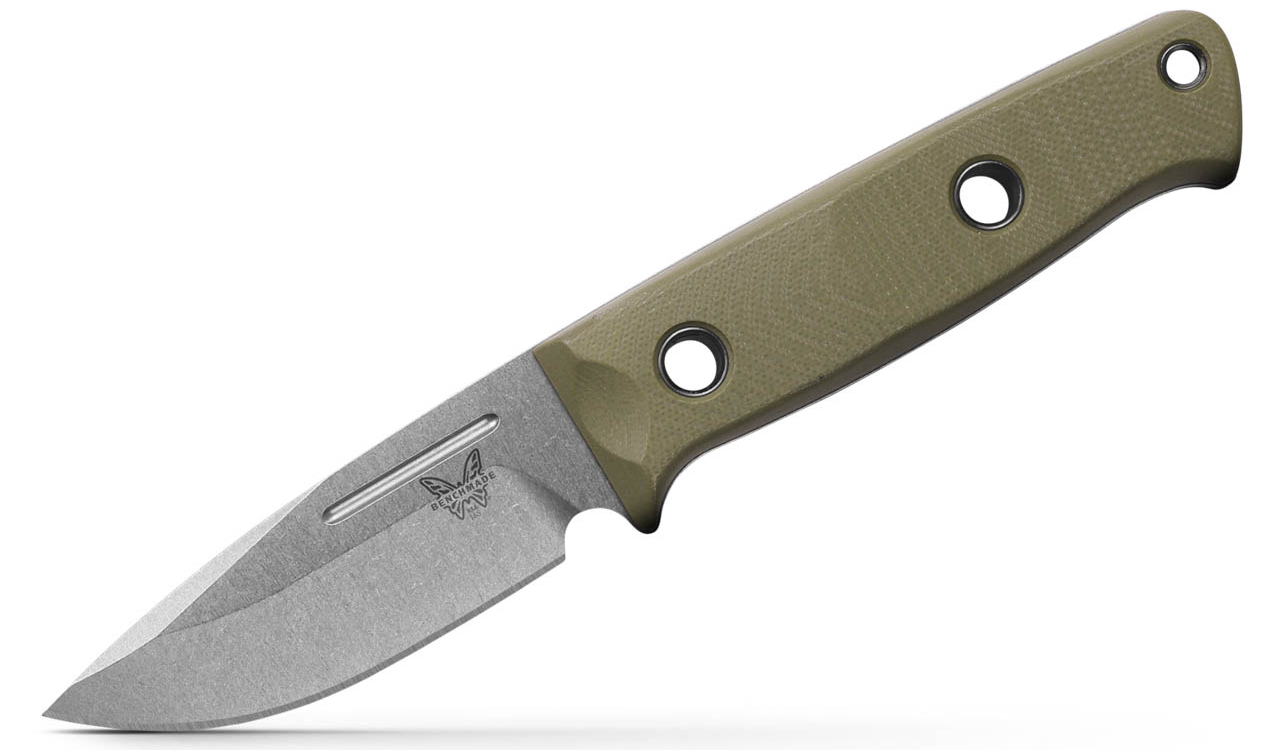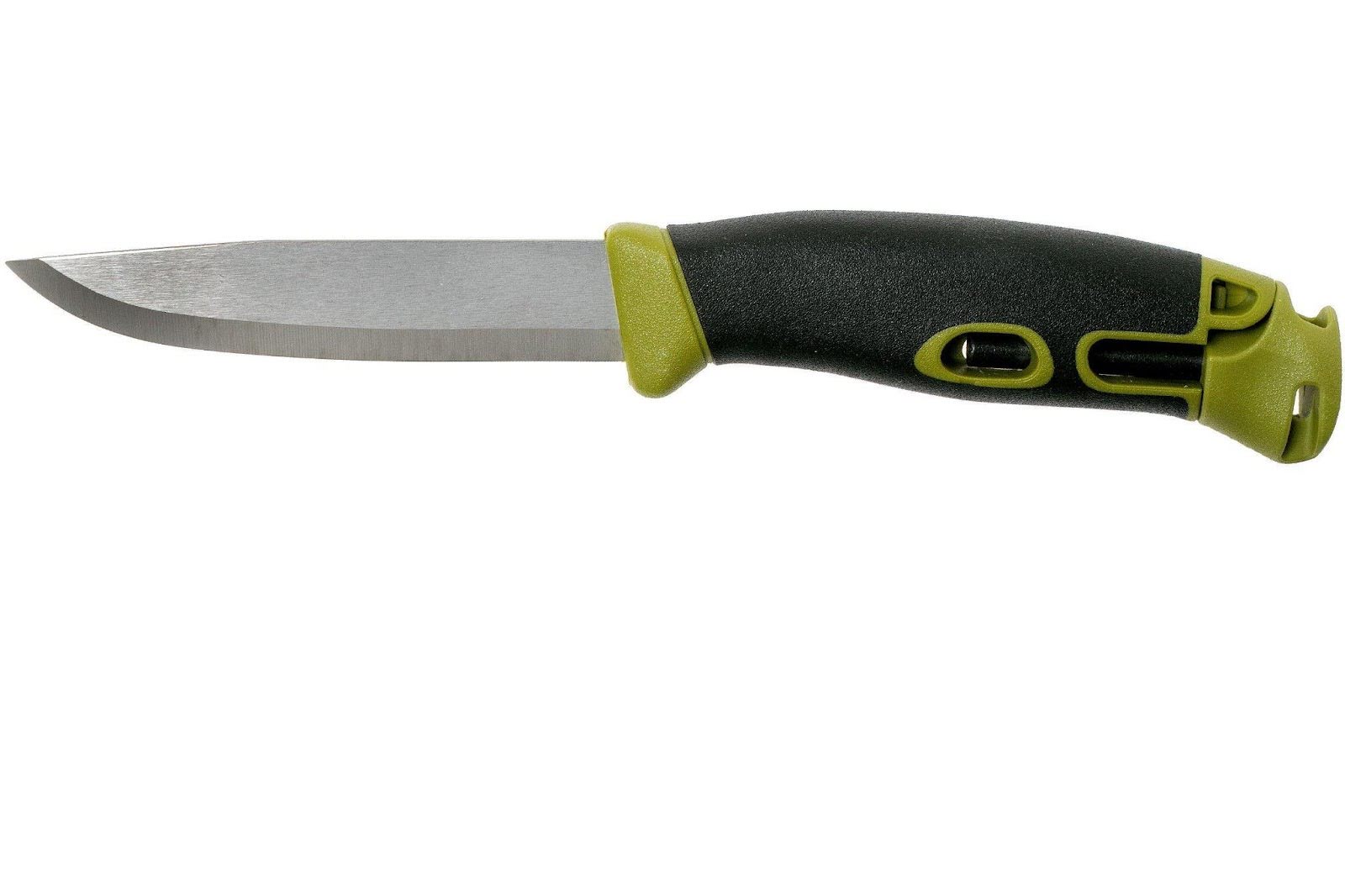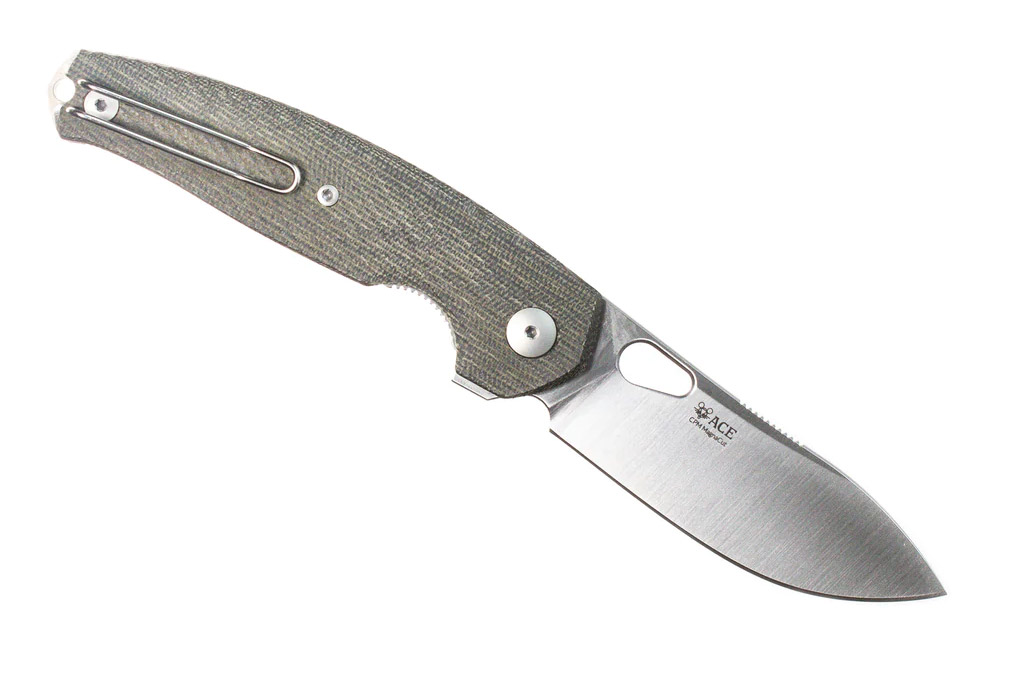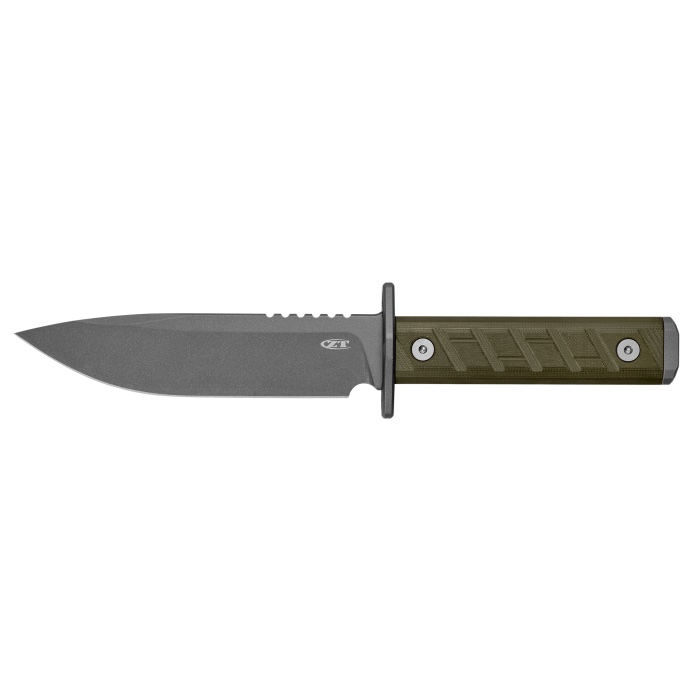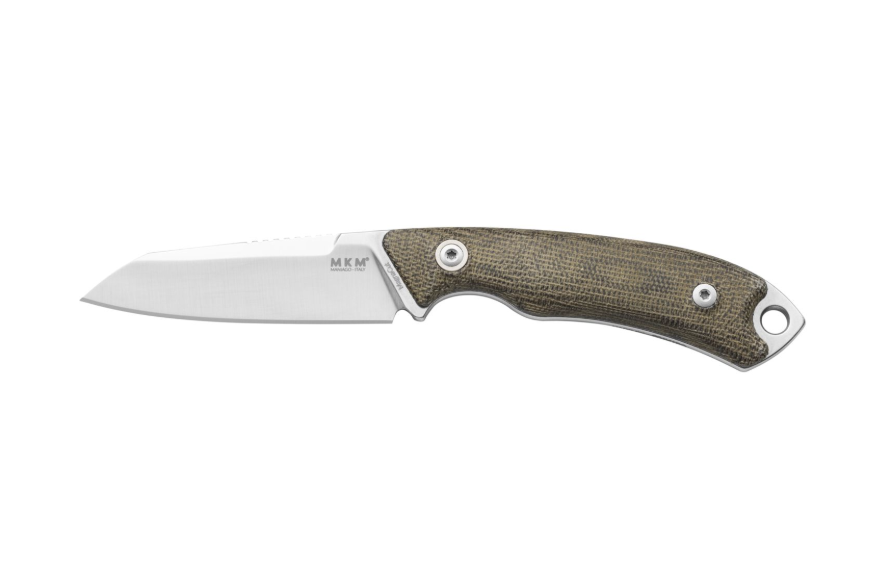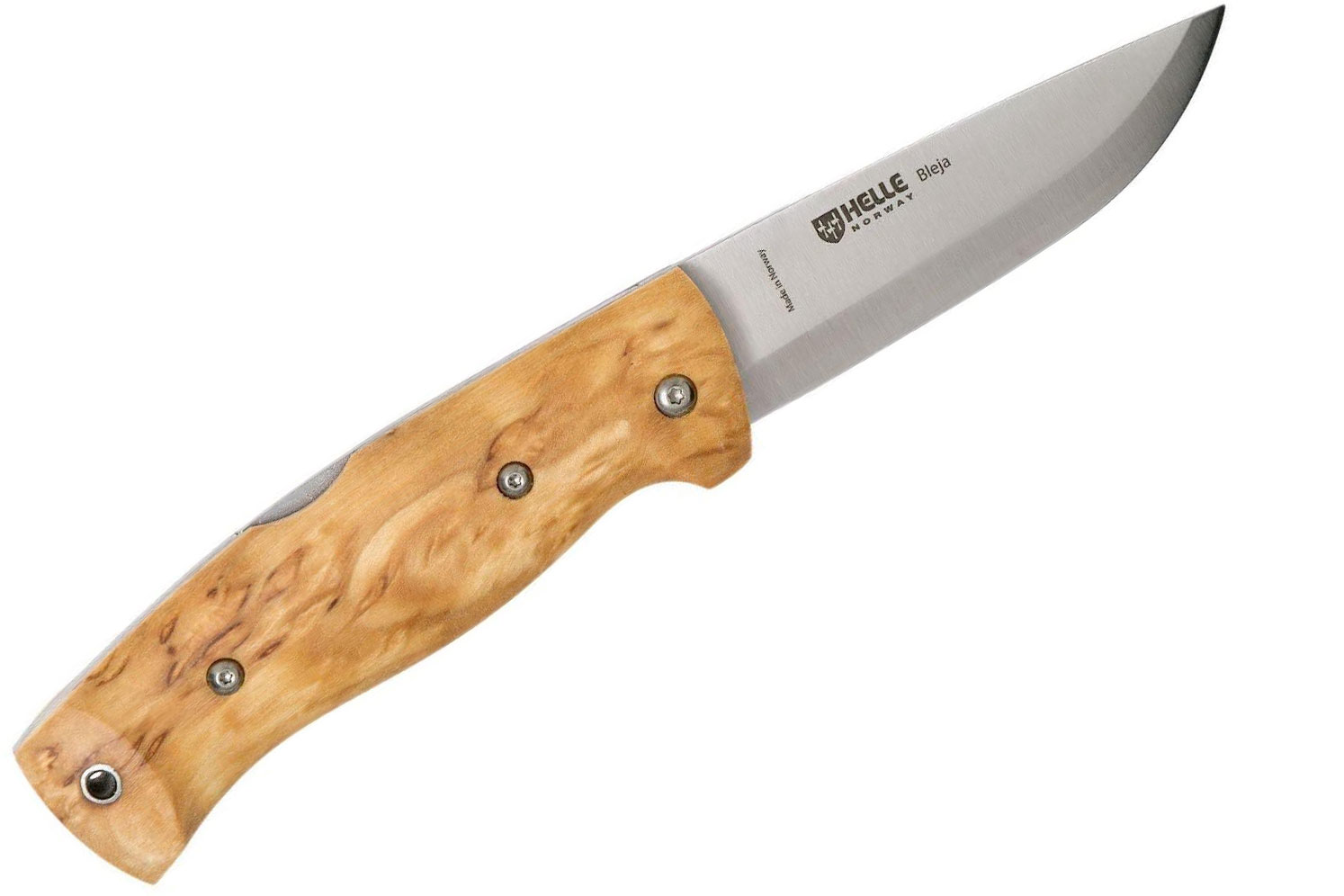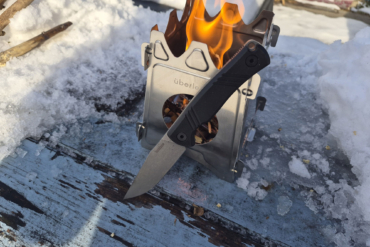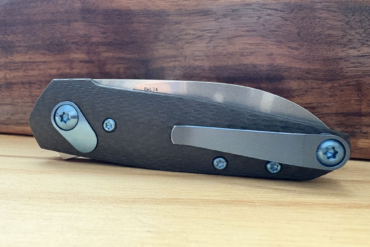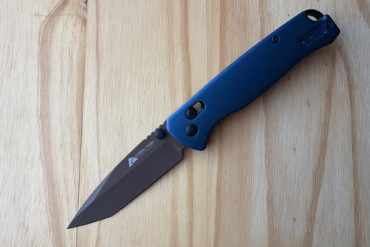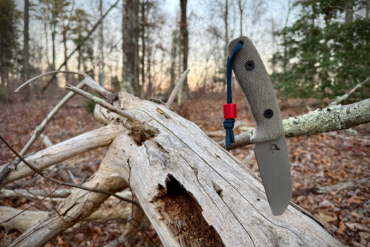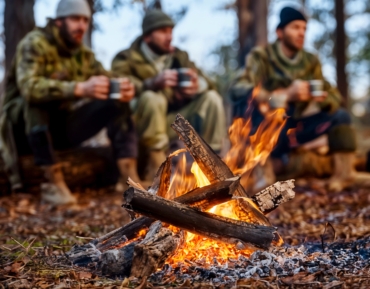You might be asking yourself, “What is bushcraft, and why are there specific knives for it?” Well, according to Dave Canterbury, in his book “Bushcraft 101,” bushcraft is a term for wilderness skills and the practice of surviving and thriving in the natural world.” This may lead you to believe, then, that bushcraft knives are survival knives. But they’re not, not really.
The bushcraft and survival categories often get lumped together in the outdoors. But there is a big difference between the two styles. Just ask anyone who’s tried to split logs with a carving knife or whittle with a machete.
Whereas survival knives are heftier and generally designed for life-and-death situations, bushcraft knives are meant for carving, kindling a fire, and performing everyday chores in the woods. Fear not — we have a separate list for the best survival knives.
We’ve spent the year researching and testing knives in real-life situations to determine which is the best of the best. Lead author Nick LeFort has been writing about knives and blades for ten years and is part-owner of an outdoor knife company.
Editor’s Note: This guide received an update on June 25, 2025, adding the MKM Knives DCA Pocket Tango 1 as our favorite small fixed-blade knife for bushcraft.
The Best Bushcraft Knives of 2025
Benchmade 165 Mini Bushcrafter
- OAL: 7.58”
- Blade length: 3.38”
- Blade steel: CPM-S30V
- Blade shape: Drop point
- Grind: Flat
- Hardness: 58-60 HRC
- Sheath: Leather
- Carry: Right side
- Weight: 6.45 oz.
- Price: $380
Pros
- CPM-S30V Stainless Steel
- Optimal hand control and fit
- Overall stout build
- Drainage hole in sheath (uncommon in leather)
Cons
- The knife will far outlast the sheath
- The sheath is right-hand only
Morakniv Companion Spark
- OAL: 8.75”
- Blade Length: 4”
- Blade Steel: Sandvik 12C27
- Blade Shape: Drop Point
- Sheath: Polymer
- Weight: 4.5 oz.
Pros
- Sandvik 12C27 Stainless Steel
- Ferro Rod in Butt
- You can’t beat the price
Cons
- The spine is broken making it harder to make a fire
GiantMouse ACE Jagt Knife
- OAL: 8”
- Blade length: 3.27”
- Blade steel: CPM MagnaCut
- Blade shape: Modified drop point
- Grind: Flat
- Hardness: 60-62 HRC
- Lock type: Frame lock
- Carry: Left or right hand, tip-up
- Weight: 4 oz.
- Price: $215
Pros
- Nessmuk blade design
- Rippled Micarta is EPIC
- Fantastic hand feel
- Well-balanced
Cons
- Rounded edges minimize your firestarting options
- Spine jimping could be a stretch for smaller hands
Demko FreeReign
- OAL: 9.875”
- Blade Length: 5”
- Blade Steel: MagnaCut
- Blade Shape: Drop Point
- Sheath: Injection Molded Plastic
- Weight: 6.9 oz.
Pros
- Lightweight
- Super grippy handles
- The sheath is awesome
Cons
- Can’t find the MagnaCut version anymore
Victorinox Venture Pro
- OAL: 9.5”
- Blade Length: 4.13”
- Blade Steel: 14C28N
- Blade Shape: Drop Point
- Sheath: Nylon / TPE
- Weight: 7.4 oz.
Pros
- 14C28N Stainless Steel
- Multiple carry options
- The fire-making blow tube/sheath
Cons
- Do we really need a ballpoint pen?
Zero Tolerance 0006
- OAL: 10.7”
- Blade Length: 6”
- Blade Steel: CPM 3V
- Blade Shape: Clip Point
- Sheath: Kydex w. Nylon Belt Loop
- Weight: 7.4 oz.
Pros
- CPM 3V Steel
- G10 Handle Scales
- Sleek Profile
Cons
- The price tag
MKM Knives DCA Pocket Tango 1
- OAL: 6.69”
- Blade length: 2.54”
- Blade steel: MagnaCut
- Blade shape: Nessmuk
- Grind: Flat
- Hardness: 61-63 HRC
- Sheath: Leather
- Weight: 2.54 oz.
- Price: $220
Pros
- Nessmuk-style MagnaCut steel
- Incredible size-to-weight ratio
- Ambidextrous magnetic leather sheath
Cons
- May be undersized for large hands
Helle Bleja
- OAL: 7.90”
- Blade length: 3.35”
- Blade steel: H3LSS (Triple Laminated Stainless Steel)
- Blade shape: Drop point
- Sheath: Leather
- Weight: 6.6 oz.
Pros
- Helle’s proprietary stainless steel
- Curly Birch handles scales
- Scandi Grind
Cons
- It’s a wee heavy
Bushcraft Knives Comparison Chart
| Knife | Price | OAL | Blade Length | Blade Steel | Blade Shape | Sheath | Weight |
|---|---|---|---|---|---|---|---|
| Benchmade 165 Mini Bushcrafter | $380 | 7.58” | 3.38” | CPM-S30V | Drop point | Leather | 6.45 oz. |
| Morakniv Companion Spark | $35 | 8.75” | 4″ | Sandvik 12C27 | Drop Point | Polymer | 4.5 oz. |
| GiantMouse ACE Jagt | $215 | 8” | 3.27” | CPM MagnaCut | Modified drop point | N/A | 4 oz. |
| Demko FreeReign | $200 | 9.875″ | 5″ | MagnaCut | Drop Point | Molded plastic | 6.9 oz. |
| Victorinox Venture Pro | $115 | 9.5″ | 4.13″ | 14C28N | Drop Point | Nylon / TPE | 7.4 oz. |
| Zero Tolerance 0006 | $400 | 10.7″ | 6″ | CPM 3V | Clip Point | Kydex w. Nylon Belt Loop | 7.4 oz. |
| White River Ursus 45 | $250 | 9.5” | 4.5” | CPM S35VN | Drop Point | Kydex (Leather also available) | 8.3 oz. |
| MKM Knives DCA Pocket Tango 1 | $220 | 6.69” | 2.54” | MagnaCut | Nessmuck | Leather | 2.54 oz |
| Helle Bleja | $224 | 7.90” | 3.35″ | H3LSS (Triple Laminated Stainless Steel) | Drop Point | Leather | 6.6 oz. |
How We Tested the Best Bushcraft Knives
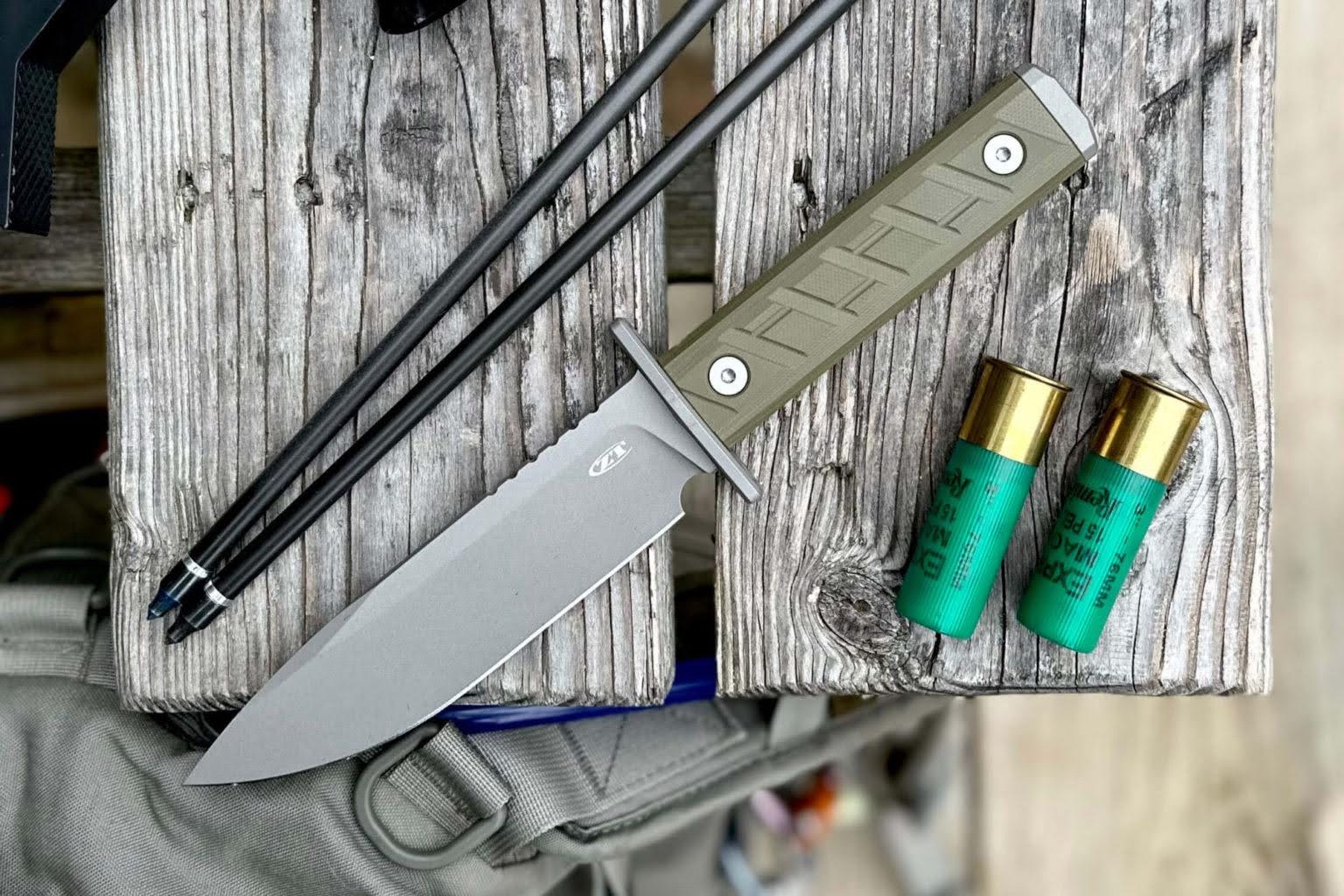
The GearJunkie team is composed of avid outdoor folk who live and breathe the products they test. Bringing together years of product knowledge as well as a keen sense of what kind of situations we’re going to get into, we scour the interwebs for knives and tools that will meet our needs. Before we even get out on an adventure, we’re looking for materials that we know are durable and reliable. We’re looking for sheaths that are easy to carry, and possibly a ferro rod thrown into the mix.
The whole idea behind bushcraft is self-reliance. The knives we pick need to be able to process food and timber, and yeah — they may need to act as a line of defense. I mean, who doesn’t want to be in that same situation that Brad Pitt found himself in at the end of “Legends of the Fall”? Okay, we’re not really thinking that dark or that deep. But we do head off on our adventures knowing that the knife we’ve chosen is the knife we need to keep us alive.
Nick LeFort — outdoor knife expert and lead author of this guide — has been testing and writing about blades for over a decade. He has been around long enough to see blade steel evolve and understands the true meaning of durability. He’s also a part-owner of a boutique knife company.
So, What Do Bushcraft Knives Do?
Before we head out on any adventure, we do our research. A good bushcraft knife needs to be reliable, packable, and durable. You can’t always figure that out by reading some specs on the internet. So, we’ll head out to retail shops, talk with our survivalist friends, and read up on what people are seeing and thinking out there. From there, we make our decisions on what bushcraft knives we want to test out.
The internet is peppered with people testing and reviewing knives and tools in their garage or at their kitchen table. In those controlled environments, everything works as intended. So, we take it one step further and spend time with these knives in real-life situations. That could be a few days in the woods on a state campground. It could also be a few days in the woods in the middle of nowhere without a trail or campsite in proximity.
Here at GearJunkie, we decided long ago that if we’re going to recommend something to you, we need to be as authentic as we can. In terms of bushcraft, the only way to determine the top line of knives is to get out there in it and rely on them.
Buyer’s Guide: How to Choose a Bushcraft Knife
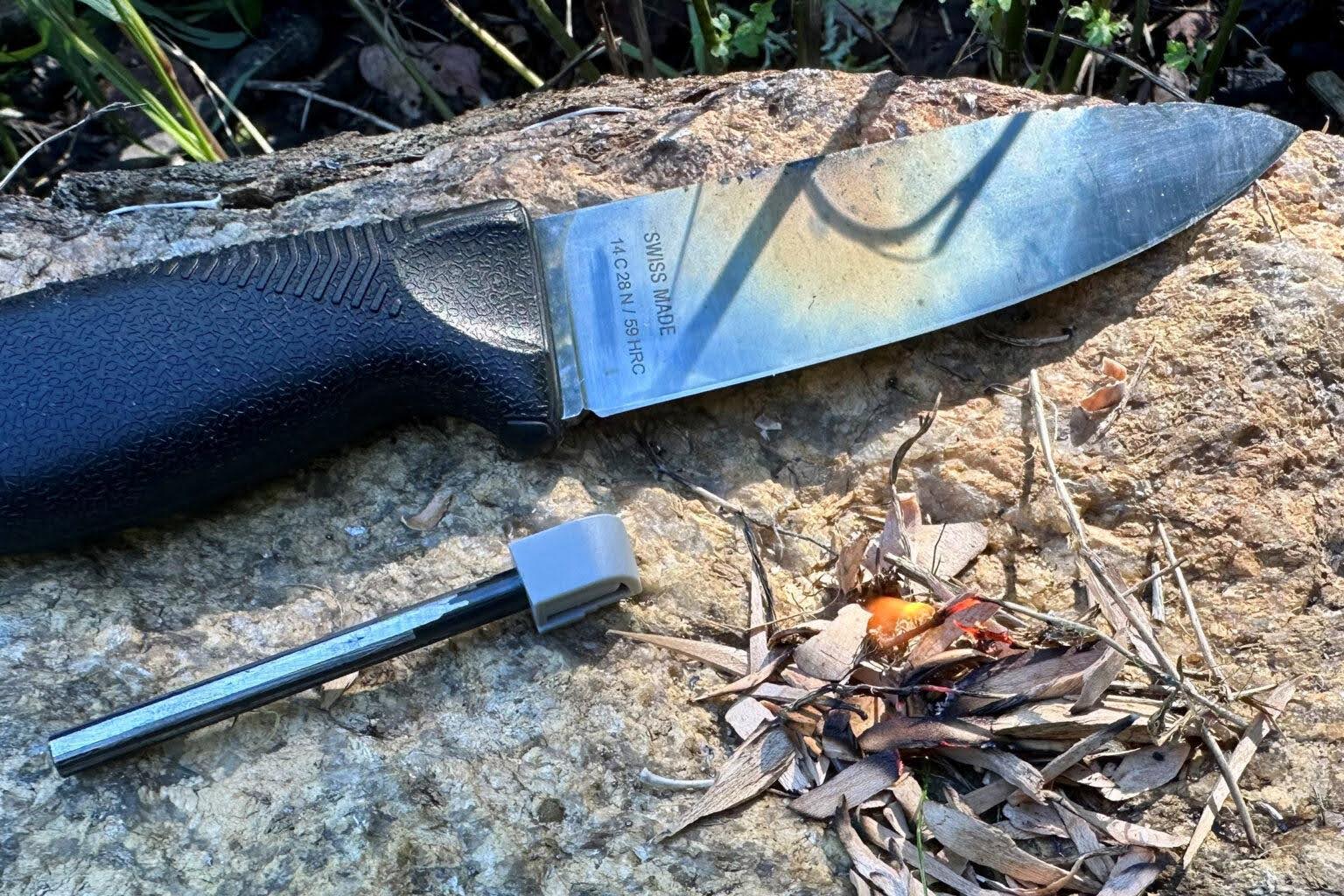
Blade Shape
The key to bushcraft is simplicity. So when looking for the right bushcraft knife for years of use and abuse, avoid knives with wild grinds. Recurved blades and serrated blades will only complicate things and prove to be a royal pain to resharpen.
The ideal bushcraft knife blade will be between 3.5 and 4.5 inches long. The knife itself should have an overall length of 10 inches or less. Regarding the overall shape, drop point and clip profiles are the most common because they’re the most useful.
In his book, “Bushcraft: Outdoor Skills and Wilderness Survival,” legendary outdoorsman Mors Kochanski states, “All general-use knives should have the blade tip close to the profile center-line of the handle.” This allows users to more easily control the blade’s point during drilling or detail work. This approach also brings added durability to the knife, as the tip is less thin than a Bowie design.
Knife Steel
The amount of knife blade steel and handle materials out there is pretty impressive. But, where the handle materials seem to have stabilized, there’s new steel coming out every year. As you can see from the above selection of eight knives, there are seven different knife steels. Our recommendation is to consider each steel on a case-by-case basis. But they should still meet or exceed the following requirements:
Corrosion Resistance
The last thing you want is your knife turning orange on you out in the field. Especially if you’re planning on using it to prepare food. All of the steel mentioned in this guide either has exceptional corrosion resistance or has been coated to eliminate the occurrence of rust.
Abrasion Resistance
Some people consider this property to be more form than function. But in all reality, if your blade can easily get scrapped up that can lead to chipping, which then could lead to blade failure.
Edge Retention/Ease of Resharpening
No matter what knife you carry, the worst knife you could carry is a dull one. That being said, you want to look for knife steels that either excel in edge retention or can be easily resharpened.
All that said, a lot of traditional bushcraft subscribers believe that using carbon steel is the best way to go. They believe that because carbon steel is usually softer than stainless steel those blades are less likely to shatter. Where at one point, we would have agreed to with this hypothesis, over time it’s proven to be a moot point.
Stainless steels like Sandvik 12C27 and 14C28N have been used by Morakniv and Victorinox, respectively, for more than 50 years in bushcraft and utility applications without fail. Newer stainless steels like S35VN and MagnaCut, which feature improved toughness, have started replacing carbon steels like 1095 and 440C, which are great for toughness — but are susceptible to rust.
Handle Material
When it comes down to handle material it’s all about grip. Ergonomics play a part in this as well, as you could have great handle material in a weird shape that will cause fatigue. In the end, you won’t want to use the knife, and you’ll have wasted your money. These are some of the more preferred materials on the market today:
G10 & Micarta
G10 and Micarta are both extremely strong materials. Both excel in grip whether your hands are wet or dry, which is why those two materials are so popular with EDC, Survival, Tactical, and Bushcraft-style knives.
Nylon & Plastic
Nylon and plastic also make for great handle materials because they’re durable and lightweight, but they’re also generally textured. It’s this texturing and styling that increases the grip on a knife with these materials.
Note: Nylon and plastic handle scales can be called a litany of names. Some of the more popular names are FRN/Zytel (Fiber Reinforced Nylon), GRN (Glass Reinforced Nylon), GFN (Glass Filled Nylon), and Grivory (Injection Molded).
Rubber
In some knife worlds, rubber is the sign of a cheap knife. However, in bushcraft, rubberized handles can be a great benefit to you due to their durability as well as their unsurpassed grip.
Wood
Wood is a fantastic handle material as long as it has been stabilized so it won’t crack. It offers a good amount of grip, which generally increases when the wood gets wet. It also looks very nice.
Ease of Use
Ease of use is a big deal when considering what knife is right for you. It can come in many forms from ergonomics, to lock design, to the hardware used to keep the knife together and in good functioning order. All in all, the last thing you want to do is struggle with or be uncomfortable using your knife.
Ergonomics
A good knife will feel right in your hand. From the shape of the handle scales to the overall thickness, and even texturing, ergonomics can be the difference between you being confident with your knife or leaving it in your drawer at home. When you consider a knife, put it in your hand and give it a good squeeze. Then, push down hard on a hard surface. If everything feels right — that’s your next knife.
Sheath
A good bushcraft knife is only as good as its ease of carry. In considering your next bushcraft knife, consider a sheath made from leather or kydex. Leather will cost you more, but can last you for years. Kydex, which is widely used by the military, is durable and generally offers not only multiple carry options, but room for you to expand it to carry a Ferro rod.
Lock Mechanism
Without fail, you will find yourself in a position where you need to rely on the lock on your knife more than you expected.
Some of the more common lock types are liner/frame locks that use a bar that indexes into the back of the blade. There are also button-style locks that use a steel barrel to keep the blade engaged. However, the most popular lock type is the crossbar lock which also uses a steel bar to hold the knife in place.
In our time and experience, we have never seen a crossbar-style lock mechanism fail without some outside force creating a major disruption in how the knife functions. Like a truck running it over.
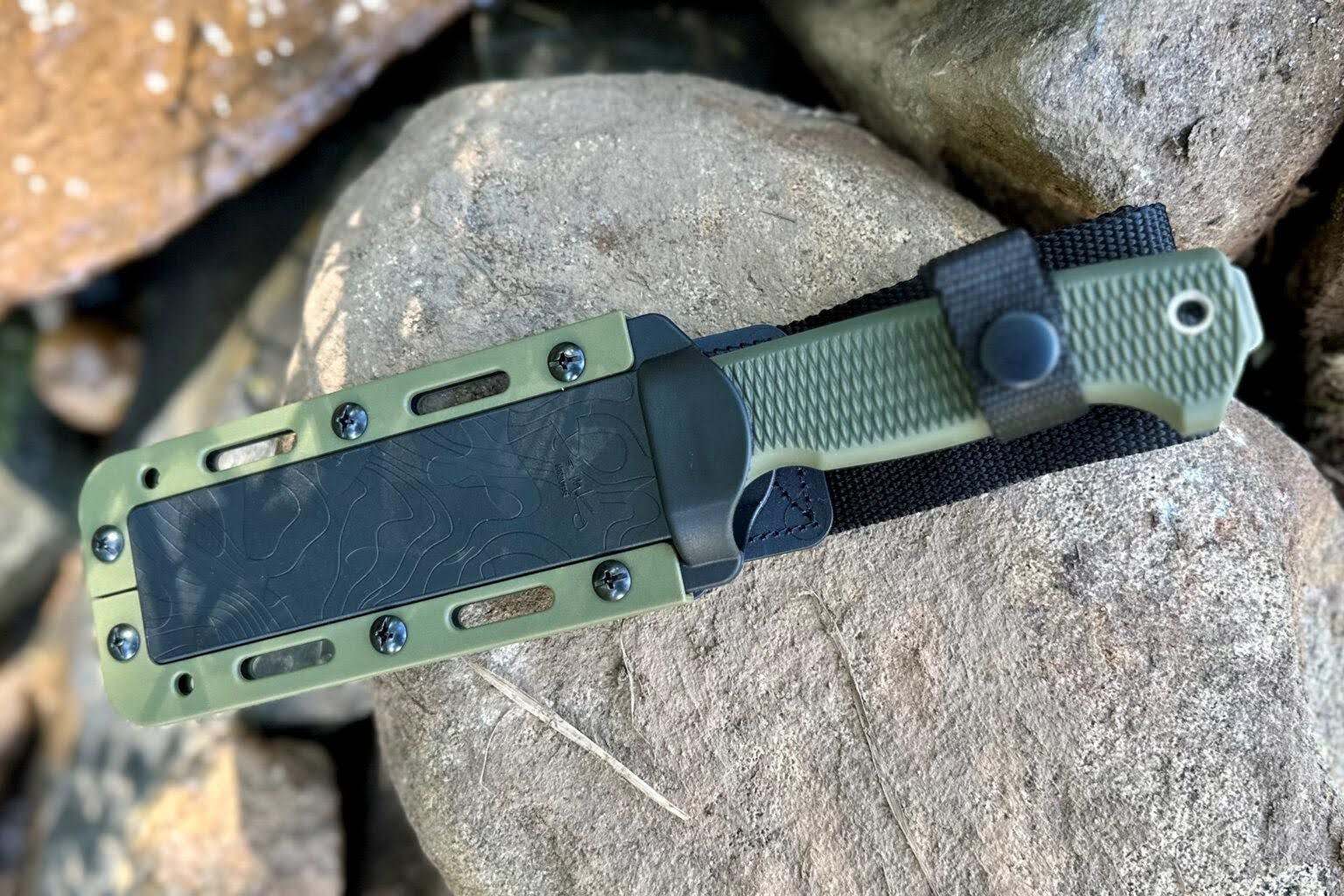
Price & Value
Knife pricing isn’t as cut and dry as I think most of us would like it to be. Yes, just like with any other consumer good, factors like materials, design, and function all play into the final price of a knife. However, there are a lot of things going on behind the scenes that determine what we pay at the store for a knife.
How much material a knife manufacturer buys has a major impact on the price you pay for a knife. Material prices, in general, will fluctuate based on how much of each item is being bought overall. We’ve most recently seen this with MagnaCut, which became a popular steel seemingly overnight. As more brands adopted it in knives, the overall price of the steel itself went down.
Overall, bushcraft knives tend to be more affordable. They’re simple knives designed to do a lot of different things. But they’re generally not flashy and composed of common materials. For a niche market, this is a welcomed departure. As we have seen with other knife categories — like Tactical Knives — sometimes being purpose-built or labeled a certain way can have a big impact on pricing.
With that being said, we’re going to break knives down into the following three categories based on pricing in general. But, to be fair, in the production knife world, there are no clear and defining lines between budget knives, mid-tier knives, or premium knives. The following is a generalization of what you can expect from each category.
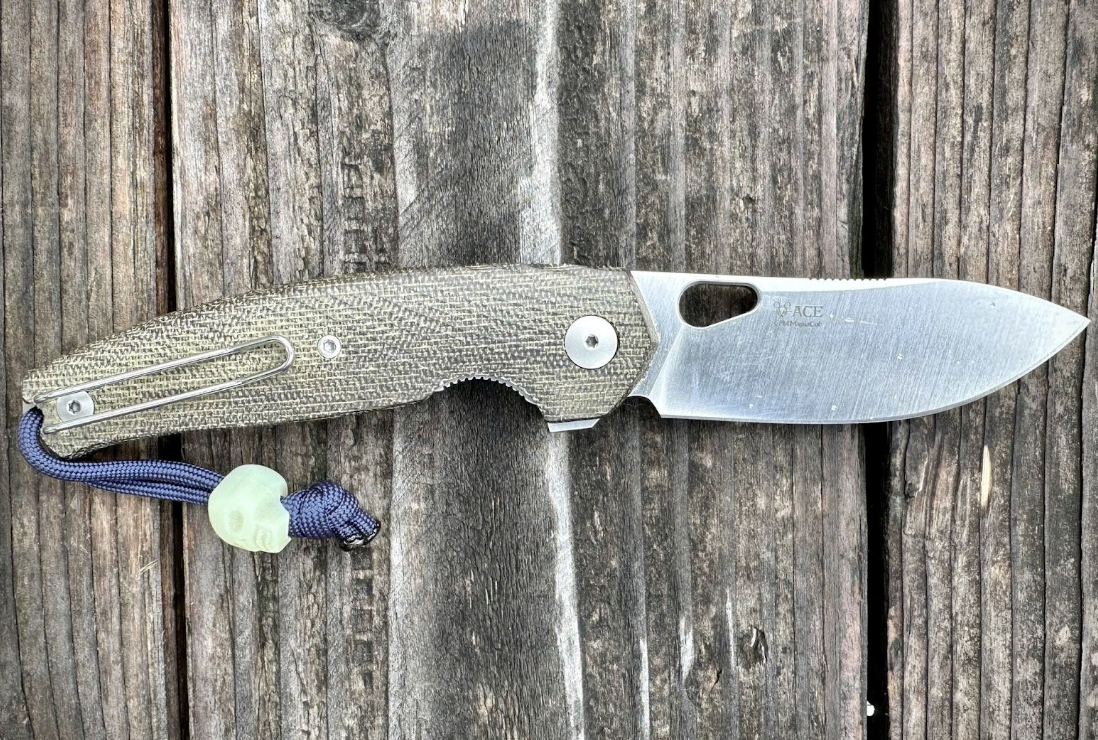
Budget
Budget bushcraft knives are usually made from carbon or stainless steel and feature simple designs for use and carry. Although some bushcraft knives can excel in ergonomics and be more complex than others, the common recipe is to keep the form simple so it functions with ease. With that being said, a good budget bushcraft knife could easily be under $50.
The Morakniv Companion Spark is made from Sandvik 12C27 stainless steel and uses a simple polymer handle that stores a ferro rod in the butt. Like other Morakniv knives, the Spark is what you should expect from a budget to even mid-tier bushcraft knife with the added benefit of having a firestarter included. If you don’t need a ferro rod, you can always save another $10 by going with the standard Morakniv Companion.
Mid-Tier
A good mid-tier bushcraft knife will be top out at $200. If you look at this list, a majority of the knives on it are mid-tier. Again, bushcraft is about durability and reliability. Sure, there are a couple of carbon fiber-handled bushcraft knives out there, but if you bring one of them out there by the fire, someone is going to give you a hard time.
The Victorinox Venture Pro is a multifunction knife designed specifically for bushcraft and the Scouts. For $115, you can have a reliable stainless steel knife that comes with a ferro rod, tweezers, pen, and two sheaths, making your carry and deployment experiences enjoyable.
We also really like the Demko FreeReign ($200). It’s an every day, all-day kind of knife that works really well in the bushcraft scene. It has a simple, straightforward design that allows it to adapt to a variety of tasks. Being made from MagnaCut makes it strong, efficient, and easy to maintain.
Premium
A premium bushcraft knife is one that goes above and beyond the demand of bushcraft. It’s one that is built from premium materials, and hosts advanced ergonomics. In some cases, this is where you’ll start to see a transition from a polymer or Kydex sheath over to a leather one, but that’s not always the case.
Benchmade’s Mini Bushcrafter ($380) is the definition of premium. In both form and function, it will offer you a lifetime of reliability while being used and abused. It’s not only made from premium materials but there’s an extra layer of attention baked into all facets of the knife.
This can be seen in the tapering of the handles, the false edge on the blade, and even the notch at the back of the blade for the ferro rod. This carries over to the premium leather sheath, which has been stylized to cradle the knife and has a spot for a built-in ferro rod.
Frequently Asked Questions
Bushcraft is the practice of using a few basic tools to transform the natural resources of the forest into the things one needs to survive. Things like carving, building shelters, starting fires, and laying snares and traps all fall under the umbrella of bushcraft. This is generally seen as more of a hobby for outdoors enthusiasts. This is different from the concept of survival, which has to do almost exclusively with life-and-death situations.
Bushcraft knives are medium-size fixed-blade knives, mostly utilizing carbon or high-quality stainless steel. Their hallmarks include comfortable grips, sharpened spines for scrapping a ferro rod or other firestarter, and edges suitable for carving and splitting natural materials such as wood.
Most bushcraft knives are meant to be carried on a belt with a formed sheath made from kydex, leather, or plastic. While some can be used for high-stress work, most bushcraft knives fall into a medium-duty role.
While some would argue that edge retention or a precision Scandi grind is the most important feature of a bushcraft knife, handle comfort should be at the top of the pile. Having a blade that’ll split wood and featherstick a whole tree is great, but it’s going to be a miserable experience if the knife doesn’t fit in your hand.
The best bushcraft knife is the one that covers all your needs. Do you enjoy building shelters? Then maybe you want something a little tougher. Or, if carving feathersticks and starting campfires is the highlight of your day, then maybe something with a comfortable grip would fit the bill. The list we’ve assembled above should help you choose the bushcraft knife that’s right for you.
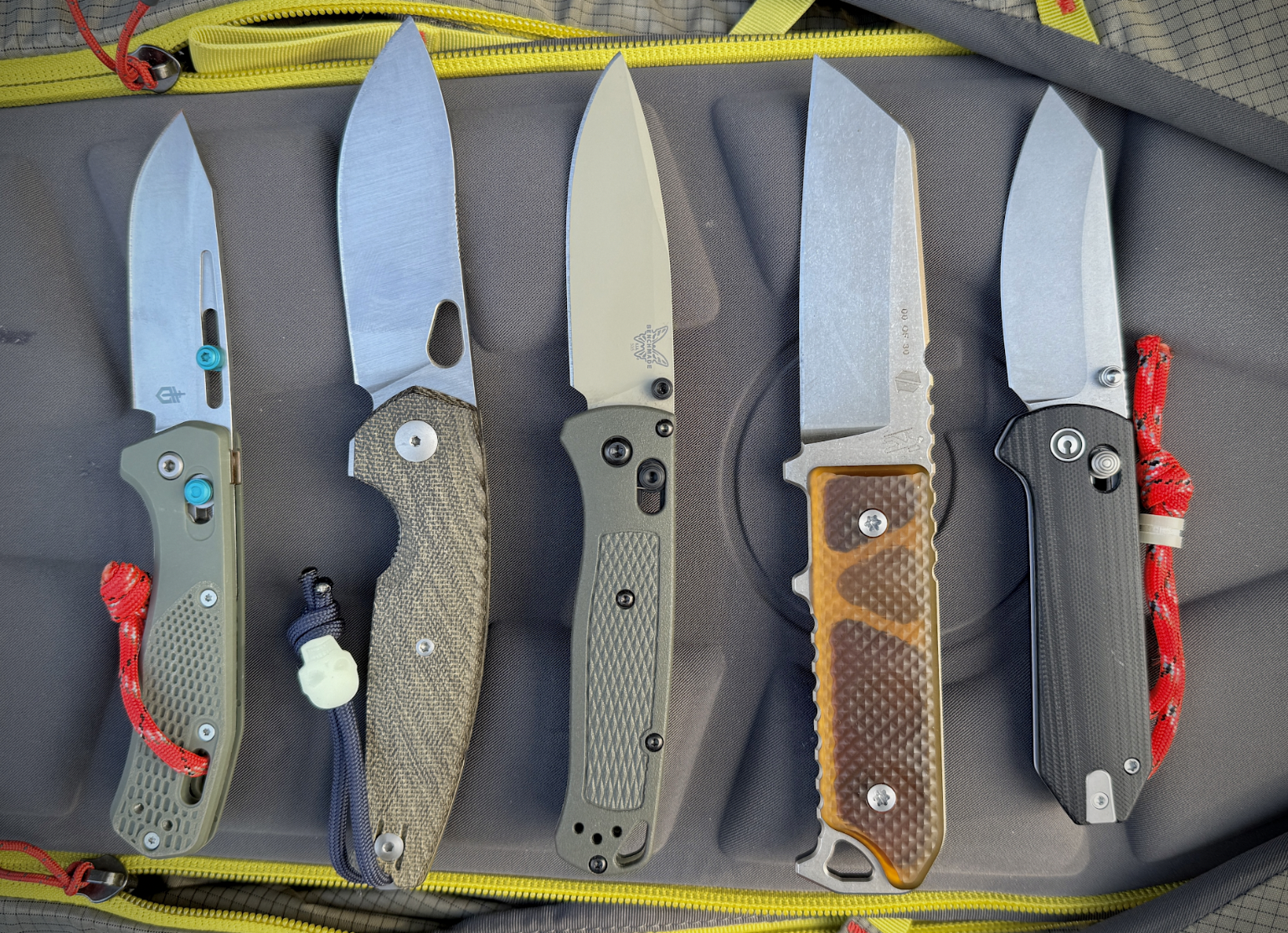
The Best Knives for Hiking & Backpacking of 2025
Hikers want a light, reliable, versatile pocket knife on the trail. These nine knives will keep hikers happy mile after mile.

The Best Tactical Knives of 2025
Known by many names, a tactical knife generally refers to a hardworking, do-all blade. Here, we review the best folding and fixed-blade knives for every budget and use.
